Rick and Dianne Sheahan: Mallee croppers thrive with grain, sheep, pigs, hay
With three sons in the business, this Dumosa grain-growing family has added lambs, pigs and hay to carve out a future for the next generation.
A business that sells crops either as grain or value-added as protein provides a multi-pronged income stream for one Mallee farming family.
Fifth-generation farmers Rick and Dianne Sheahan work alongside three of their six children in their Dumosa-based operation, Morning Quest, with a mix of enterprises that includes broadacre cropping, hay, lambs and pigs.
The operation is spread across farms within a 100km radius of their home property, and while Rick is not keen to disclose exactly how big that operation is, he acknowledges it is diverse enough to support the burgeoning family involvement.
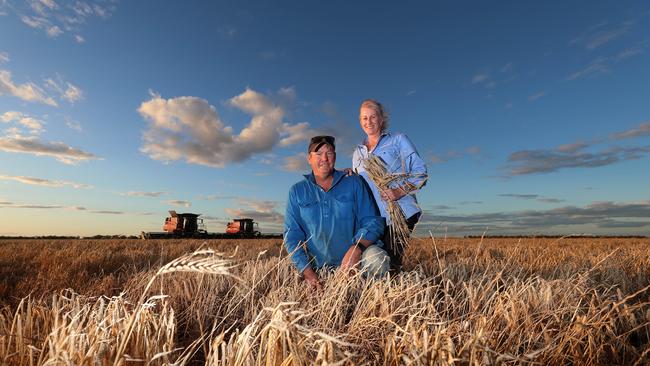
His three sons all left the farm to gain qualifications before returning to the business, and the range of education they received could not have been more suitable.
Brent, 28, studied commerce, Toby, 26, studied agriculture and Jordan, 22, became a diesel mechanic. Rick said it was the perfect combination of skill sets to contribute to the family business.
Their three daughters, Georgia, 24, Ella, 18 and Tessa, 13, are not directly involved in the business, but help out in their own ways.
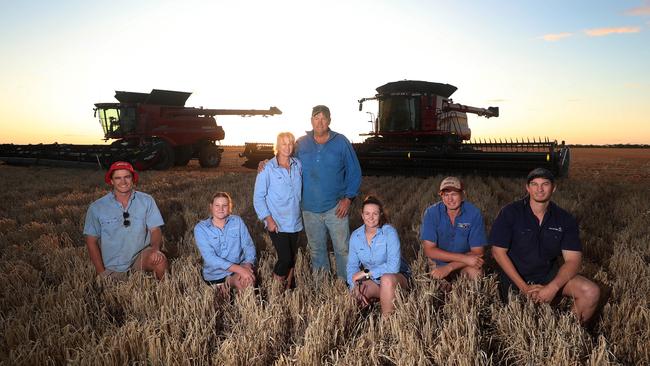
DATA DRIVEN
It has been a lifelong involvement in farming for Rick, who said school did not interest him, but farming did, especially the data.
He bought his first farm at 21 and ran a piggery until the set-up became out of date.
But it whetted his appetite for running pigs, which the family does by growing them out in four igloos, on contract for Riverlea.
“The pigs come in at 10-12 weeks and go out at 20 weeks, and during this time, are putting on 500-700g a day,” Rick said.
“We make sure the pigs stay healthy, and supply straw, and the pellets are supplied by the pigs’ owners, Riverlea.”
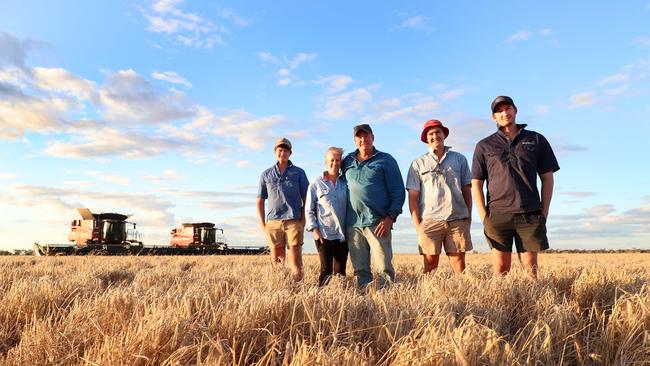
The lamb feedlot, where they turn off between 20,000 and 25,000 lambs a year, is run in a similar way to the pigs, except the business buys and then sells the animals.
“The lambs get a pretty simple ration of barley, straw and molasses, which is fed from a mixer wagon,” Rick said.
Store lambs are bought in, usually still in wool, and ideally they are shorn going into the feedlot, depending on shearer availability.
At the moment, those being fed include lambs sourced from Western Australia at less than $100, and even with a taxi fare of $30, they are still under the market rate.
Crossbreds are preferred, but again it’s number-crunching that determines what is bought. At times that does include Merinos if they fit into the budget.
Lambs come in at 35kg and leave at 60kg, the aim being a 28-30kg carcass.
The intensive animal operation allows the family to value-add their grain and straw themselves, by feeding it to the lambs.
“We like to think that we don’t always sell grain as grain but as protein (lamb),” Rick said.
CROPPING AT THE CORE
Cropping underpins the operation, with several thousand hectares sown each year.
The mix includes wheat, barley, lentils and vetch. Canola was included in the past, but it has been a risky operation in the 250-320mm rainfall country.
Rick is reassessing the oilseed though, given the strong returns for canola over the past couple of years.
“I consider canola a high-risk crop for us, but I may change my attitude,” he said.
It’s hard to assess what will happen this harvest, but the operation usually banks on getting 2.5 tonnes a hectare for wheat and about the same for barley.
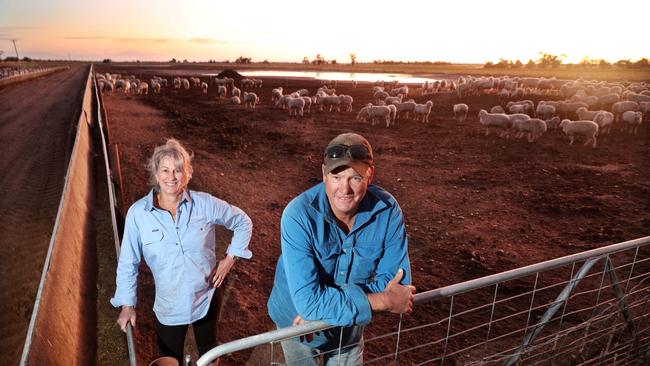
Which crops are sown where is determined by soil types. Across their country they have a range of soil types, each categorised into either class A, B or C. Class A grows lentils or wheat, class C grows only barley or vetch and class B can go either way depending on the seasonal outlook.
“We did this assessment visually. For example the lighter soils were nominated as class A so can grow the wheat and lentils,” Rick said.
Vetch is included in the rotation as a break crop. The Sheahans’ sons’ desire to make hay allows this to be done in a normal season, but there are several hundred hectares that have been sprayed out this year and will be used for grazing, due to the wet spring.
Rick said he encouraged his sons to add hay contracting into the business mix a couple of years ago when they were teenagers. It offered a way for them to expand the Morning Quest operation to encompass the increasing number of family members involved.
“Finance was cheap and it was a no-brainer and you also have to have a mindset that encourages new ideas,” he said.
“You can do all the numbers and I love the numbers, but I was once told that if it doesn’t feel right, then don’t do it.
“That is a philosophy that I have followed ever since.”
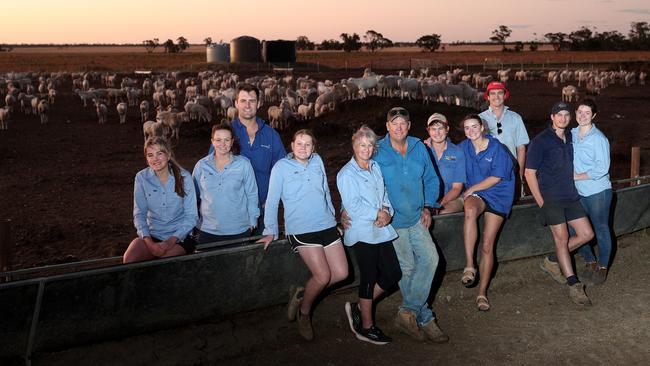
STRONG FOUNDATIONS
The family has all its own gear, but it is not afraid to call on outside advice despite their own obvious success.
Rick said they worked with an agronomist to determine realistic fertiliser regimes given the cost of inputs and the potential return on that investment.
They also go on gut feel about how they see the season tracking, though they didn’t anticipate the massive rain-induced challenges they now faced in getting their crop off this year.
And there is always the desire to keep trying new things in an industry that still ignites the passion for Rick, Dianne and the next generation of Sheahans.
“Yes we have a busy operation and without Dianne, the backbone of our family, it would be very difficult to do what we do, so all credit to her,” Rick said.
“But it’s a great job and lifestyle despite being busy. Our family is passionate about farming and love the fact we are helping feed the world.
“I feel so privileged to be working alongside my family, which continues to expand with partners and grandchildren on the way.
“It’s the reason why Dianne and I continue to grow and diversify our family business.”
Thanks to the diverse enterprise mix, the Sheahans are providing quite the menu in that quest to feed the world, whether that’s pork, lamb or grains.




